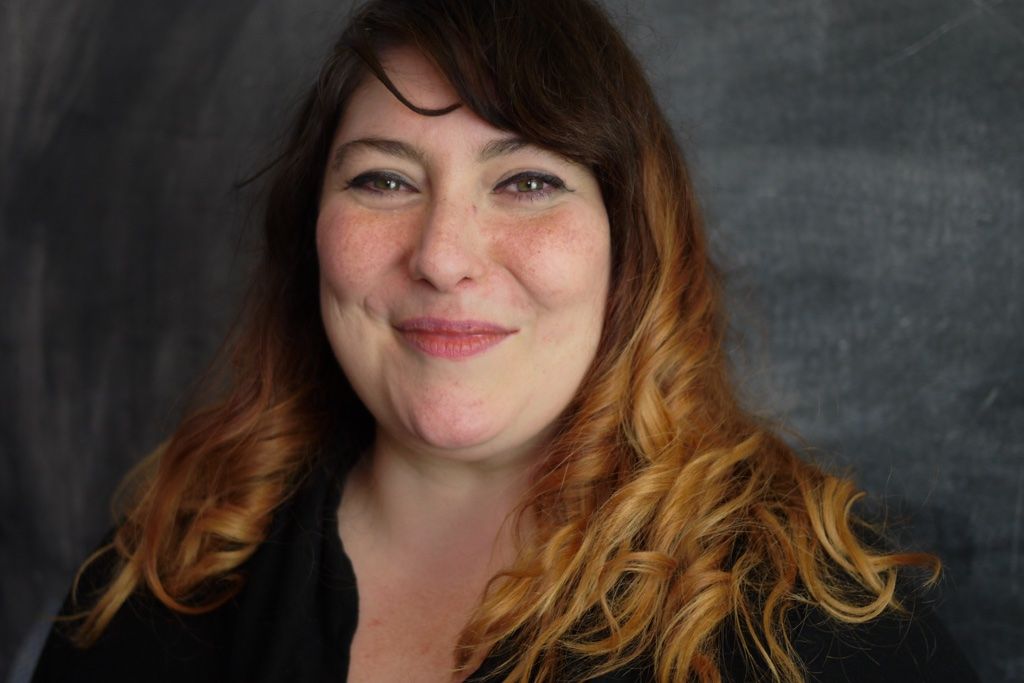A special one-on-one chat with Lorna Walker, buddhify Kids meditation lead

By Dana Jaffe
In this series, our editor Dana Jaffe sits down with each of the buddhify teachers to find out what they’re all about. Here she talks with Lorna about teaching mindfulness to kids, her lyrical practice style, and her aspirations for a more inclusive meditation world.
I think my style is lyrical, which probably connects to my background as an English teacher and having studied literature. I like the practice of saying out loud what I’m experiencing at the moment I’m experiencing it. When I say lyrical, it’s about trying out new words that still capture something that you want to express.
At the beginning, being a mindfulness teacher, you’re listening to lots of guided practices and picking up things you like, and it’s easy to get attached to specific words. I’ve dropped the stock phrases so much that they’ve become really meaningless in my own practice. Now, there’s less of that and just more of being quite free and saying what you want. Sometimes it works and sometimes it doesn’t. Everything is a signpost to something. It’s just playing around with it.
I have lots of stories fresh in my mind, but I can think of one that stands out right now. There was a young boy with autism in the class and he engaged in the lessons in such a beautiful and deep way. I think there was a preconceived idea that he wouldn’t access the teachings in the way that he did.
In the last lesson, we talked about looking forward to the future and how they would bring mindfulness more fully into their own lives. The kids all said really beautiful things, and what he said was, “I will be my inner [his name] – my kinder self.” It was just such a beautiful moment for him. He had tried all the practices that we’d offered, but when he came out of it, what he’d really uncovered was this kinder self inside himself. That felt really profound for me to witness. There are moments like that all the time.
Kids have fewer barriers than adults. You ask the kids to do something, they just do it and then you can explore with them what they thought about it. Teaching meditation is no different to anyone else coming in asking them to do something; they just do it. With adults, they want the reasons behind things and the rationale, and that can often be a barrier to their real experience and the self-consciousness seems to grow as people get older. Actually, even in adults, when you think that they might have gone back to that place of childlike curiosities; they’ve not. It can take a while to get there, so the adults can learn a lot from the kids.
In the school I teach at, I’ve been working with the teachers and the kids. It is really interesting because there is such a marked difference. In a training weekend with the teachers, I said I need someone to volunteer and I told them what it was for and none of the adults raised their hands. In school the day before, I had said to the kids, I need a volunteer and I didn’t tell them what it was for and they were all off their seat. I was like, why are you all volunteering? You don’t know what I’m asking you to do. That’s a very visual difference. Adults are really reticent — what am I putting myself into? What is this going to be? How will this help me? Whereas the kids are open to the experience.
That’s a tough one! I think the meditational world can seem a little bit privileged like it’s something that only middle class, well-educated, or affluent people can access. When you get an image in your head of the meditational world, you don’t typically think of some of the people who I would really love to reach out to, in Glasgow specifically. Can we bring the meditational world into the parts of our own culture and society, where maybe people don’t step into so often? That’s the only problem I have with it. I don’t want it to be something that’s really shiny; I want it to be for all of us. I’m sure that everyone has that aspiration, but unfortunately, the people who have accessed a lot of what’s out there have been folks that have been able to afford it.
Having the chance to be quite creative around practices for kids has been amazing. In the lessons we teach, you’re teaching the same practices all the time, so being able to step out of that has been wonderful and refreshing. It was a piece of work that I thoroughly enjoyed. The studio was also great fun! Everyone was really supportive and warm, so I didn’t feel nervous about it.
Season 2 of Stranger Things. What did I like about it? Everything! I love being absorbed in a world of Spielberg-ian ‘80s stuff and it’s like a jaunt back to my childhood. I just love it. I love that world. See the bonds of friendship in it, they’re just awesome. It’s like ET and The Goonies and all the good stuff!
Before specialising in mindfulness training, Lorna has worked as an educator for young people with social, emotional and behavioural difficulties. Together with her Youth Mindfulness colleague Michael, she led the design of the buddhify kids content and was the lead writer.
You can experience Lorna’s contributions to buddhify Kids through meditations under the Growing Happiness, Calming Down, Feeling Better, Walking, and Doing Homework categories.